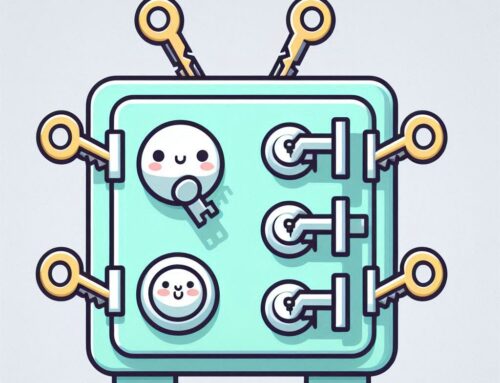Pedal to the Metal: The Pursuit of Speed in Cardano’s Basho Era (Conquering Congestion, One Block at a Time!)
Alright, speed demons and blockchain buffs, let’s buckle up and blast off into the high-octane world of the Cardano Basho era! No, we’re not talking about a new extreme sport or a futuristic racing league. We’re talking about the phase of Cardano’s development where the primary focus is all about making the network faster, more scalable, and more efficient than ever before.
Think of it like giving Cardano a turbo boost, allowing it to handle a growing number of users and transactions, without breaking a sweat. Imagine a futuristic race, where Cardano is in the lead due to the innovative designs of its engineering team. So, let’s explore the exciting journey of the Basho era!
The Pre-Basho Era: A Need for Speed (But Not Quite There Yet!)
Before the thrilling ride of the Basho era, Cardano had already achieved significant milestones in terms of security, decentralization, and smart contract functionality. However, there was a growing realization that the network still needed a serious speed boost to reach its full potential, and this is where the Basho era comes into play.
-
The Growing User Base (More People, More Transactions!): As the Cardano ecosystem has experienced impressive growth and popularity over the past few years, the influx of new users and applications created a clear need to increase the network’s capacity to handle the load, something that had to be addressed.
-
Transaction Bottlenecks (Traffic Jams on the Blockchain!): In some cases, transaction speeds could slow down during peak usage, creating a need to further optimize the network’s performance. This was creating a bottleneck, and needed to be dealt with.
-
Preparing for Mass Adoption (Ready for the World Stage!): Ultimately, the Cardano team recognized that the network needed to become more scalable and efficient to prepare for mass adoption and become a truly global platform, which fueled the changes that were made in the Basho era.
The Basho Era: Supercharging the Cardano Network (Innovation on Overdrive!)
The primary focus of the Basho era is on implementing a series of innovative scaling solutions, and performance enhancements, to address some of the most critical challenges facing the Cardano network. This transformation marks a pivotal moment, and the project is constantly changing and innovating.
-
Layered Architecture: The Foundation for Speed: By fully utilizing Cardano’s layered architecture, developers can work on the different layers independently, which reduces the workload, and speeds up innovation. The core of the scaling strategy in the Basho era involves taking full advantage of Cardano’s unique design.
-
Performance Optimization: Making Everything Faster: This era was explicitly designed to improve the transaction processing capacity of the network, reducing the need for users to wait long times for their transactions to complete.
-
New Technologies: A Glimpse into the Future: The Basho era is characterized by the introduction of new technologies designed to scale Cardano’s capabilities and ensure that it can handle any new requirements of the future.
The Big Guns: Specific Scaling Techniques Deployed During the Basho Era
What are these magical techniques being used to supercharge the performance of the network? Here are some of the key tools that were introduced during the Basho era:
-
Hydra: Off-Chain Processing for Lightning-Fast Transactions: Hydra, a layer-2 scaling solution, enables faster and more efficient processing of transactions by moving them off the main blockchain, processing them in a secure side-chain environment, and then committing the results to the main chain. It’s like having express lanes for transactions!
-
Off-Chain Processing (Taking the Load Off!): Hydra allows transactions to be processed off-chain, which significantly reduces the load on the main blockchain and speeding up transaction processing times.
-
Multiple Heads (Many Hands Make Light Work!): The Hydra protocol can be implemented with multiple “heads,” which are independent channels that handle transactions off-chain, creating multiple side-chains working in parallel, which greatly increases the transaction processing speed.
-
-
Sidechains: Branching Out for Extra Capacity (Like Adding Extra Wings to a House!): The Basho era includes the development and implementation of sidechains, which are independent blockchains that can be connected to the main Cardano blockchain. This allows for increased transaction processing capabilities, and further improves the versatility of the network.
-
Parallel Processing (Doing More at Once!): Sidechains allow for parallel processing of transactions, as each chain is able to process information separately, which greatly increases the overall network capacity.
-
Customization (Tailoring Solutions to Specific Needs!): Sidechains can be customized to support different use cases and functionalities, allowing developers to create specialized solutions for their individual needs, by building new systems for niche communities.
-
-
Optimized Network Protocol: Enhancing Communication and Efficiency (Making the System More Agile!): The network protocols are being optimized to increase efficiency and improve communication between nodes, which greatly speeds up the process of how information is shared on the Cardano blockchain. This is not about making big visible changes, but about streamlining all the key processes, which will improve efficiency.
-
Faster Communication (Speeding Up the Conversation!): This can significantly increase the speed at which transactions are processed by reducing the latency in the network.
-
-
Pipelining: Processing Transactions Like a Pro (Keeping the Flow Moving!): Pipelining refers to the way that transactions are processed in Cardano. The core changes made to pipelining during the Basho era improve transaction speeds by reducing the wait time for processing transactions, which were previously handled in a more linear way. With pipelining, transactions can be processed much more efficiently, and the entire network runs much faster overall.
-
Reduced Wait Time (No More Waiting in Line!): By allowing for the next block to be processed while other blocks are being validated, this reduces wait time, allowing for transactions to be processed faster and the blockchain to run smoothly.
-
-
Input Endorsers: Allowing Multiple Nodes to Process Transactions (More Hands on Deck!): This new feature, introduced during the Basho era, allows nodes that are processing transactions to do so at the same time, instead of having to validate transactions one at a time, which significantly increases throughput. It’s like having a team of workers all contributing to a large project.
The Impact on Transaction Speeds: Breaking the Speed Barrier!
The scaling techniques implemented during the Basho era have had a tangible and noticeable impact on transaction speeds:
-
Faster Transaction Processing: Hydra and other techniques allow Cardano transactions to be processed much faster, reducing the wait time for users.
-
Increased Throughput: The network can handle a larger number of transactions at any given time, reducing the risk of congestion and ensuring that all transactions are processed in a timely manner.
-
Lower Fees: By increasing network capacity, these technologies help to reduce transaction fees, making the blockchain more affordable to everyone.
The Takeaway: Cardano is Primed for the Future!
The Basho era represents a crucial step in the evolution of Cardano, by aiming to address the network’s scalability limitations, and ensure that it can handle mass adoption. By implementing new technologies like Hydra and sidechains, Cardano will be able to handle a much greater number of users and transactions, while also providing increased security and more predictable fees, solidifying its role as a powerful and scalable platform for the future. It’s not just about making the network faster; it’s about building a sustainable infrastructure.





